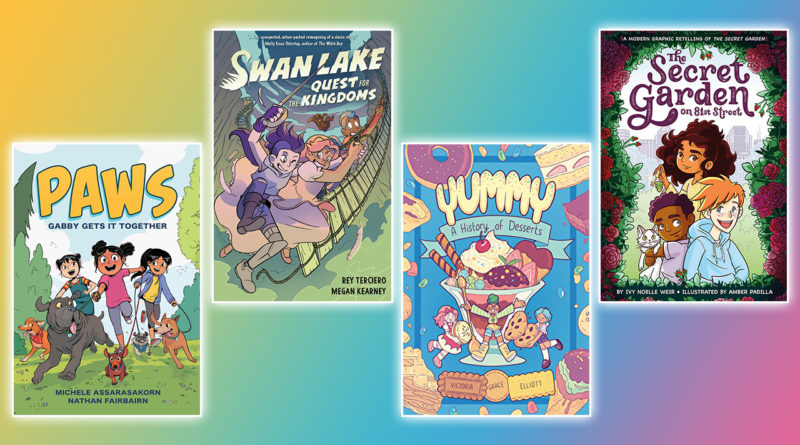Spring forward with great new graphic novels for middle-grade readers
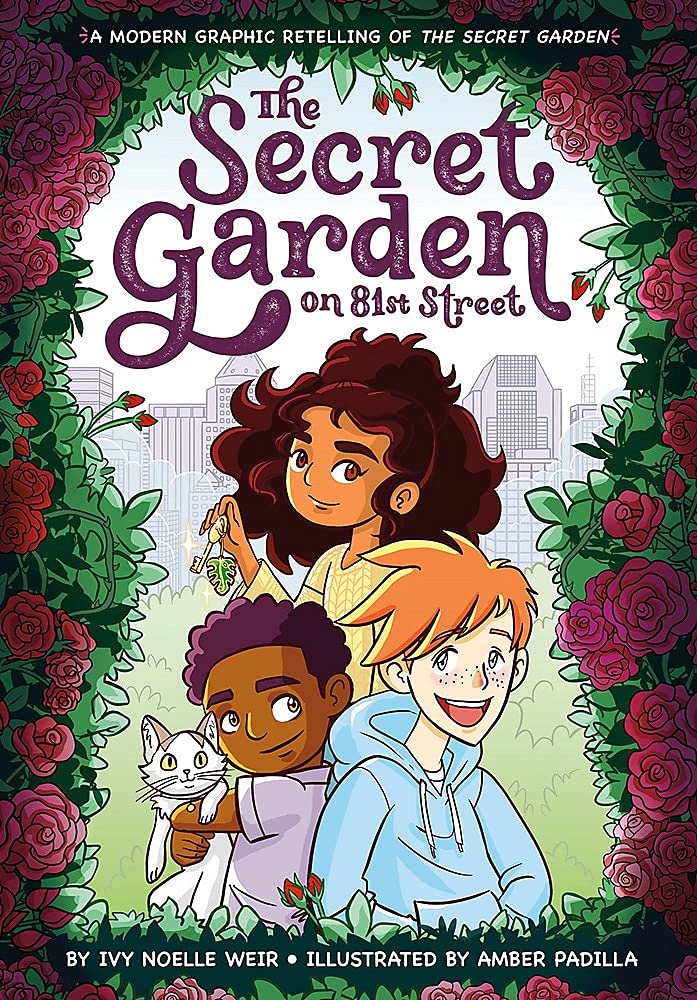
The Secret Garden on 81st Street: A Modern Graphic Retelling of The Secret Garden by Ivy Noelle Weir
Illustrated by Amber Padilla
Published by Little Brown for Young Readers (distributed in Canada by Hachette Book Group)
This graphic novel, written by Ivy Noelle Weir and illustrated by newcomer Amber Padilla, is a truly modern graphic retelling of Frances Hodgson Burnett’s classic children’s novel The Secret Garden.
The Secret Garden was first published in 1910, and has since yielded multiple films and stage versions. And the core elements are intact here. The protagonist, Mary Lennox, is approximately 12 years old when she is suddenly, shockingly orphaned. In The Secret Garden on 81st Street, Mary has an unpleasant exchange with her mother on page 3 . . . and by page 4, her parents have died in an accident. By page 6, she has been whisked from her California world of tech-enabled convenience and video gameplay to her absent uncle’s large house in New York City.
Instead of an expansive Yorkshire country estate, it’s the vastness of New York City – Central Park, The Metropolitan Museum of Art, the endless food choices- that Mary begins to explore – with an independence which is strongly (and refreshingly) encouraged by the neighbour who cares for her. As Mary opens herself up to the diversity of the city and the possibilities of human interaction and life outside of technology, the core mystery surfaces.
The secret garden on 81st street lies in disrepair behind a locked door on the roof of her uncle’s house. Mary unravels the story piece by piece: why the garden has been abandoned, why her uncle stays away from the house, and why her cousin Colin lives shut up in an upstairs room. This secret garden is much more modest in scale than the garden in Burnett’s original. It is also much more relatable for North American urban readers. And as we emerge from two years of pandemic, the constraints limiting this secret garden only amplify the power of its commentary on the restorative power of nature.
The Secret Garden on 81st Street is gratifyingly and unapologetically modern: the cast is diverse, and their updated lives and traumas ring true. There are small nods to the original. For instance, occasional full-page illustrations of thes tree outside the house mark the progression of the seasons from winter to summer with a robin drawn from the original tale. But these are organic tuck-ins within a wholly contemporary story. The Secret Garden on 81st Street moves briskly, thanks to skilled storytelling, economy of language, and a willingness to let Padilla’s effervescent artwork stand on its own in critical emotional – and horticultural – moments.
Set in the heart of one of the biggest metropolises in the world, this update is a worthy, wonderful celebration of the therapeutic powers of nature and community. Young readers will be engrossed, touched, and inspired by a tale beautifully rendered in words and pictures.
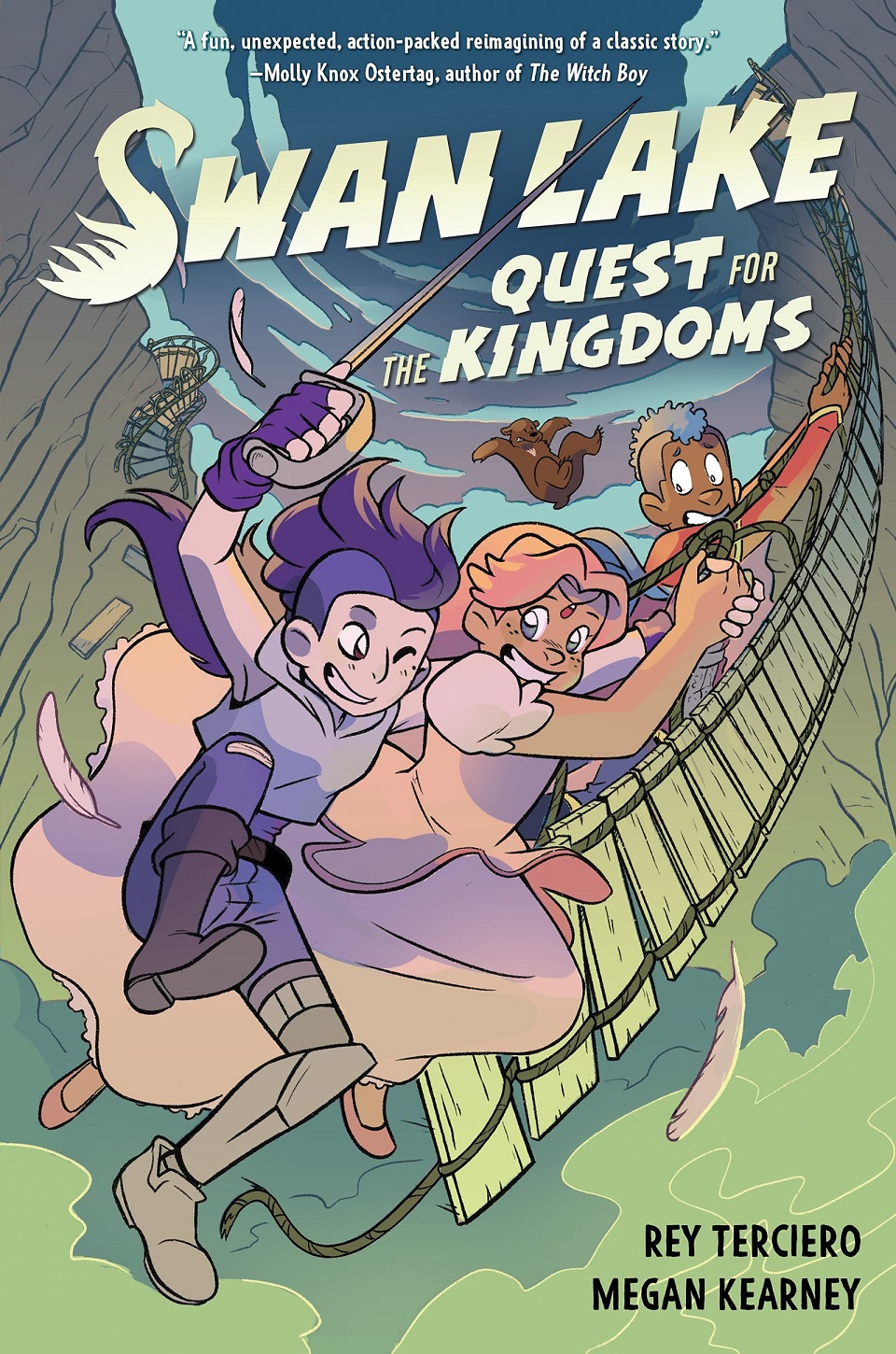
Swan Lake: Quest for the Kingdoms by Rey Terceiro
Illustrated by Megan Kearney
Published by HarperAlley (Distributed in Canada by HarperCollins Canada
Swan Lake: Quest for the Kingdoms by Rey Terceiro with illustrations by Megan Kearney is an earnest, engaging and enjoyable fantasy story
Of interest is that it features characters – or at least character names – drawn from Tchaikovsky’s magical ballet of the same name. But in Terceiro and Kearney’s hands, the story of doomed lovers who die because of circumstance and intransigence becomes a story of resourceful children who display resiliency and refuse to be defined by their own unfortunate circumstances.
Odette is a princess of the Bloom kingdom – while a baby, she was mysteriously cursed. Now she becomes a swan during the day and reverts to human form only after sunset. She longs to dance, and chafes at her overprotective parents, who keep her castle-bound because they see only her limitations. Odile is a princess of the enemy Rotbart kingdom, with an artificial leg that makes her feel different. Though everyone views her as a princess, she wishes to be a swashbuckling adventurer. Finally, Siegfried is a prince of the Montrose kingdom who is expected to behave in stereotypically masculine ways to prove his “worthiness” of the throne . . . and is belittled for seeking alternative and less damaging courses of action.
Quest for the Kingdoms is a fun and often funny tale of how these three come together unexpectedly, bicker and fight continuously, and ultimately prevail overcome their limitations and familial biases. Collaborating selflessly to remedy Odette’s curse, they grow into better versions of themselves. The resounding moral of this story is “Different is good”: their quest succeeds only because each of them – with the encouragement and support of the others – embraces the difference that has caused them to be shunned or criticized by society.
There’s a strong, one-way narrative undertow pulling the reader through Quest for the Kingdoms right from the start. Each of the graphic novel’s three sections is introduced by a map that plots the exact journey of the protagonists. Within each section, there are no side-trips or missteps: just forward plot momentum.
So ultimately, there’s not a lot of nuance here. Swan Lake: Quest for the Kingdoms is a breezy, energetic treatise on the power that we gain by resisting gender, class and societal preconceptions and simply being who we are. But with its surfeit of good-humoured positivity and cartoony vitality, that’s absolutely enough.
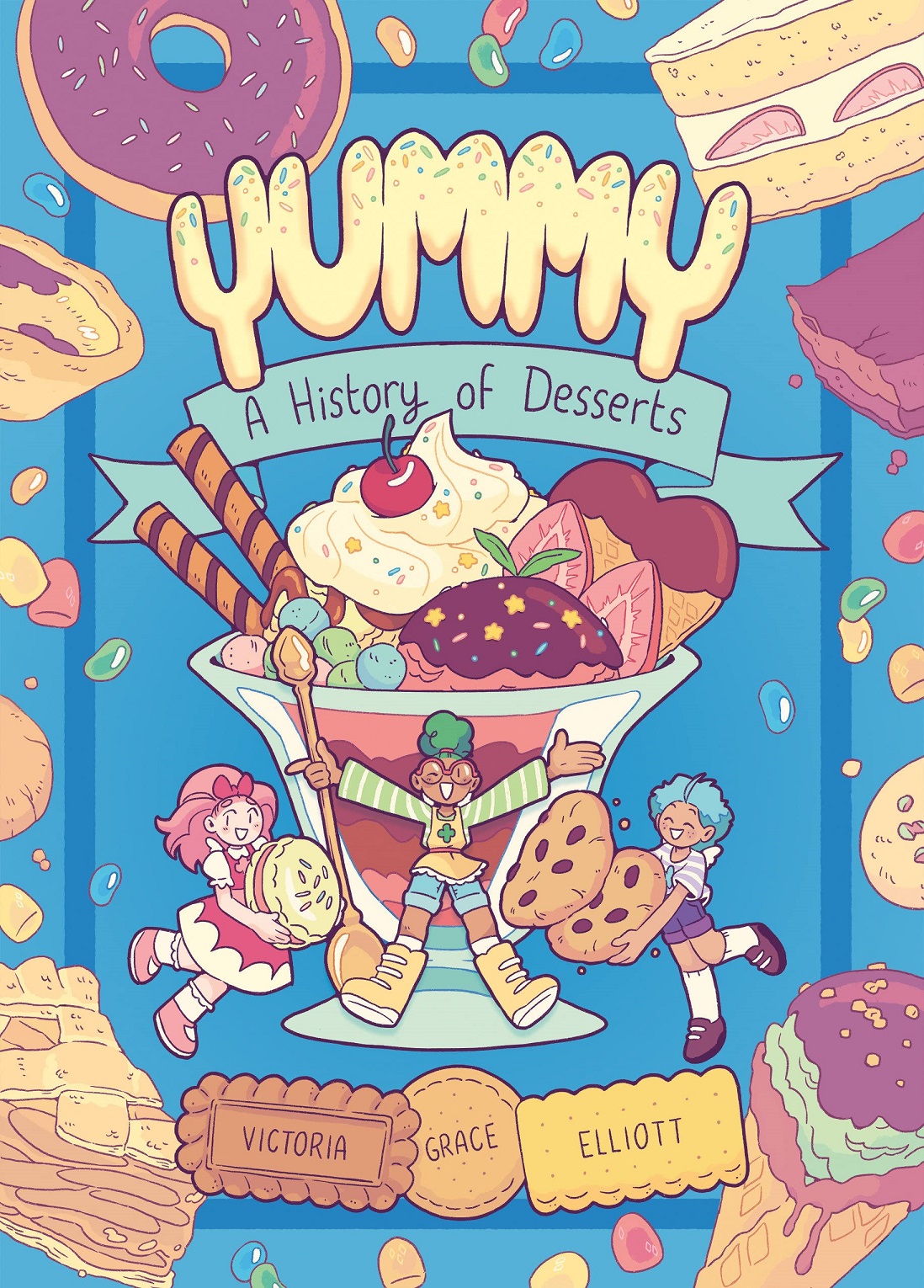
Yummy: A History of Desserts by Victoria Grace Elliott
Published by Random House Graphic (distributed in Canada by Penguin Random House Canada)
Yummy is the sweetest, most inventive non-fiction graphic novel I’ve ever seen. Cartoonist Victoria Grace Elliott has meticulously researched the history, the science, and the recipes at the heart of the desserts that obsess us today. And she has brought them to life in a sumptuously illustrated volume that goes far beyond a mere collection of recipe and dessert illustrations.
This is a full-blown synesthetic history of the world, told through the cross-cultural origin story of the foods we love and the continuous migration of ingredients and ideas. The two longest chapters are the first, which are devoted to the winding multi-cultural histories of ice cream and cake. Later chapters embrace the brownie, the donut, pie, gummies, cookies and macarons. Like an expert chef, Elliott combines a unique set of ingredients into an engrossing and educational graphic novel treat.
Her on-page narrator is Peri, a precocious child-like food sprite who becomes our winningly opinionated and food-obsessed host. She guides us conversationally through the twists and turns of history, and comically injects herself into the narrative with over-the-top reactions to incredible facts (like: It once took an hour of hand egg-beating to make a cake fluffy!) Peri also delights in announcing deliberate digressions for “STORY TIME!” During STORY TIME, the art style becomes more muted, and the focus shifts to recounting things like “The Legend of the Waffle Cone” (supposedly born when an ice cream vendor ran out of cups at the 1904 World’s Fair in St. Louis); or “The Legend of Mooncakes” (used to overthrow the Mongolian-led Yuan Empire in China and usher in the Ming Dynasty).
Two fellow sprites join Peri’s spirited narration for key roles. Fee (always in costume) plays the role of historical personages that Peri would like to interview. Examples include Italian cook Antonio Latini, who bridged the gap between sorbetto and ice cream in his 1692 cookbook; Fannie Farmer, the American “Mother of Level Measurements” who ushered in a golden age of standardization in recipes; and Captain Hanson Gregory, the man who put the hole in the donut!
Have you ever wondered how the various possible ingredients in cookies affect not just the taste, but the size, shape and degree of crispiness or softness? Or how two pie crusts can be made from the same ingredients…but have entirely different textures? The role of Peri’s second sprite friend Fada is to take us into his science lab, to help us understand. And finally, many chapters include RECIPE TIME: when a recipe’s ingredients and process are visualized and acted out by the sprites. This practically begs for children to follow along at home (with supervision, of course).
Yummy will be engrossing and educational for any child, and it could be a wonderful research tool to support project work at school or baking at home. I lamented the lack of an index at the back – it would be a great addition that would make it even more practical.
One final observation: Yummy is visually sumptuous, as befits the subject. The colour palette is heavy on pastels – with loads of orange and pink. It might almost be too visually rich. The effect of all this colour, all these illustrations, and the volume of information and good-humoured chatter among these 3 winsome sprites feels almost like eating a surfeit of sweets. So my suggestion is that you limit yourself to a chapter at a time.
Savour it!
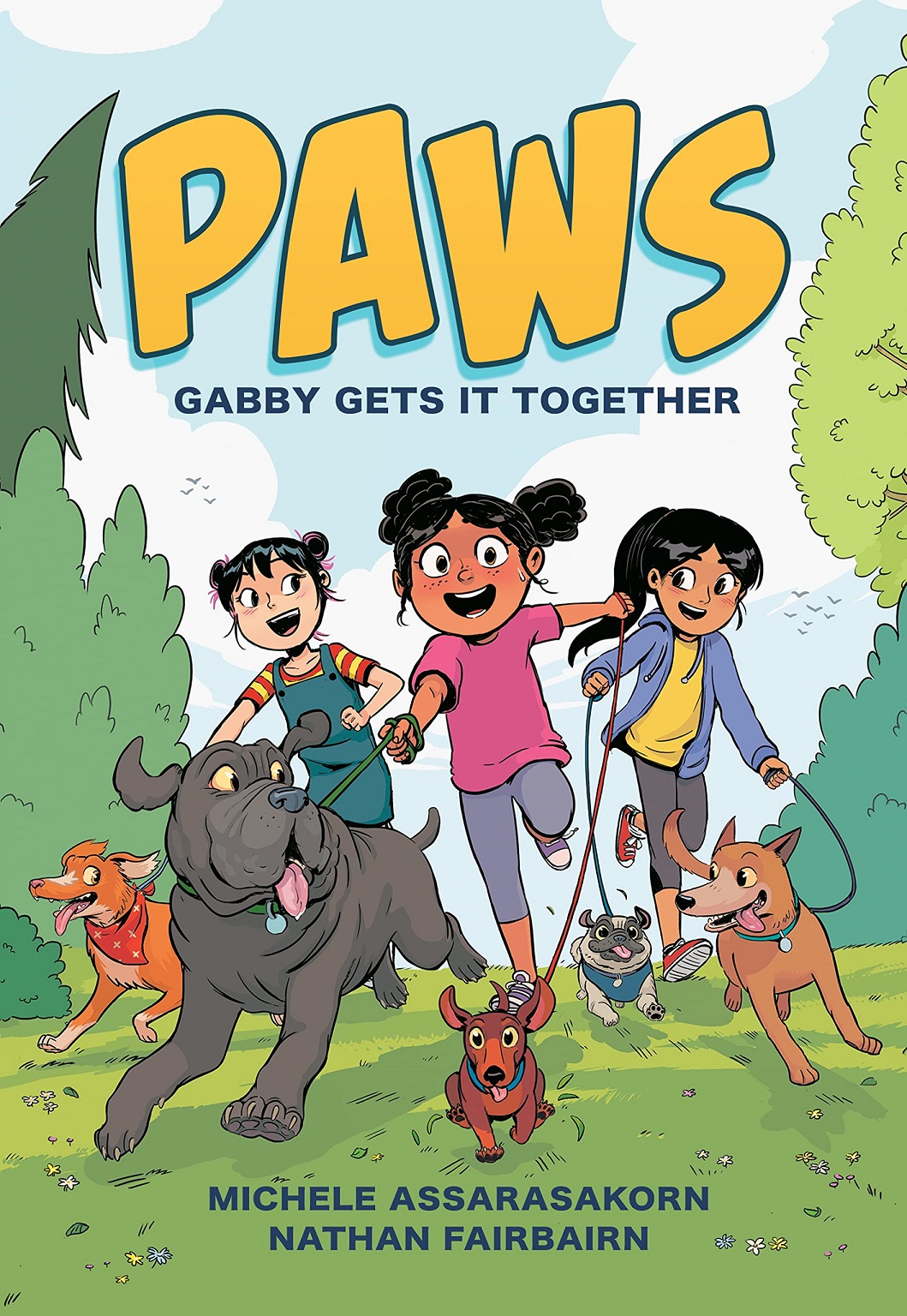
PAWS: Gabby Gets It Together by Michele Assarasakorn
Illustrated by Nathan Fairbairn
Published by Razorbill (distributed in Canada by Penguin Random House Canada)
This energetic graphic novel by Michele Assarasakorn and Nathan Fairbairn stars best friends Gabby, Priya and Mindy. They adore animals and crave the companionship of pets, but for a variety of good reasons, none is allowed to have one of their own.
Paws – which stands for Pretty Awesome WalkerS – is the story of their resourcefulness in launching their own dog-walking business. The launch of PAWS not only scratches their collective itch to connect with “doggos” – it brings a steady income and a stream of choices – and conflicts – that deepen a sweet, lightweight story into something of substance.
For 9-12 year old readers, the story of this diverse group of young girls will be immediately relatable. Illustrated in a style that bright and cartoony, yet realistic and grounded, Paws walks a great line between the local and the universal. It has a refreshingly specific sense of Vancouver as a place (Value Village! Adults with careers in animation and the arts!). At the same time, it delivers relatable commentary on the variables that influence the lives of all North American children. These variables include socioeconomic differences among the girls, the frequent reality of mixed-grade instruction (In a single mixed-grade class, Gaby is in grade 5, and Mindy and Priya are in grade 6); their diverse interests (Priya’s an athlete, Gaby’s a reader and musician, Mindy’s a “cool” free spirit) and different parenting styles (the girls at one point compare helicopter parenting vs. free range parenting).
The graphic novel mines equal amounts of humour and insight from the girls’ challenges as they turn their simple, idealized idea for a dog-walking service into a more complex lived reality. Dog poop. Doggy differences. Other commitments. Independence vs the need to get help. The need to spend money to make money.
The growth of the business ultimately requires the growth of the girls. Luckily for the reader, this growth doesn’t come easy, which makes for an engrossing read. Paws features delightful dialogue, relatable experiences and valuable lessons wrapped in charming illustrations. Best of all? It ends with a promise that “The girls of PAWS will return.”
© Scott Sneddon, SesayArts Magazine, 2022
About The Author
Scott Sneddon
Scott Sneddon is Senior Editor on SesayArts Magazine, where he is also a critic and contributor.
Visit About Us > Meet the Team to read Scott’s full bio …

